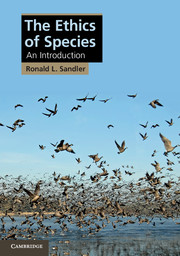Book contents
7 - Homo sapiens in particular
Published online by Cambridge University Press: 05 November 2012
Summary
The focus of the previous chapter was whether non-Homo sapiens species boundaries have any ethical significance, particularly with respect to the creation of nonhuman transgenics. The conclusion reached was that there is no objective basis for the ethical significance of nonhuman species boundaries, though the fact that many people value species purity does have some normative implications in both policy and nonpolicy contexts.
Many of the same technologies that are used to create transgenic nonhumans can also be used to engineer part-human transgenics. As discussed in Chapter 6, part-human chimeras are already being created for biomedical research purposes. Human stem cells have been introduced into mice, rats, primates, and fowl in order to study the development, migration, and fate of cells and tissue in vivo. The hope is that once these behaviors are sufficiently characterized and understood they can then be predicted and controlled, enabling therapeutics for everything from degenerative diseases to lost limbs. Introduction of human genes into nonhuman genomes is also commonplace in biomedical research. For example, house mice, which have a high level of genetic similarity with humans, are often used as animal models for human diseases. When a disease being studied has a genetic risk factor or cause – for example, cancer, sickle cell anemia or schizophrenia – the mice models are often improved (or enabled) by inserting human genetic material that codes for or triggers the disease. Mice have also been enhanced by insertion of human genetic material into their genome. For example, trichromatic mice (mice are usually bichromatic) have been created by replacing a mouse gene with a human gene that encodes for a type of photoreceptor not normally possessed by mice. Human genes have been introduced into nonanimal genomes as well. For example, E. coli that synthesize insulin were created by insertion of the human gene for the hormone. As these examples illustrate, there is nothing about human genes or the human genome that prevents them from being engineered using the same techniques now routinely used on nonhuman genes and genomes. As the cost and knowledge constraints on genetic research are reduced, and as the research continues to globalize, part-human genetic hybrids and chimeras are likely to become commonplace.
- Type
- Chapter
- Information
- The Ethics of SpeciesAn Introduction, pp. 157 - 179Publisher: Cambridge University PressPrint publication year: 2012



